
Most men's scarves are approximately 10 inches wide, 70 inches long, and made from either a solid or patterned cut of cloth designed to wrap around the neck.
In a nutshell, a scarf is a simple rectangle of fabric.
Yet most men are baffled as to how to properly wear one, and worse, many feel the wearing of a scarf is somehow effeminate.
The purpose of this article is to tackle these problems head on.
1st – Wearing a scarf isn't difficult. In this article I'll lay out a few rules and help you understand the basics of choosing the right one for your needs.

The wearing of scarves by men was popularized by its adoption by the aviators in both World Wars, who used the scarf for warmth and to prevent chafing as they scanned the sky for enemy planes.
2nd – Scarves are manly. They have been a staple in men's wardrobes for over 2000 years, with the world's militaries using them as rank insignia and unit designators. From the Terracotta Warriors of China to modern-day desert military units, we see scarves used because they provide value in inclement weather. Look at photos of the world's greatest military aviators or soldiers fighting in the Battle of the Bulge, and you'll see lots of scarves, and nary a girly man in sight.
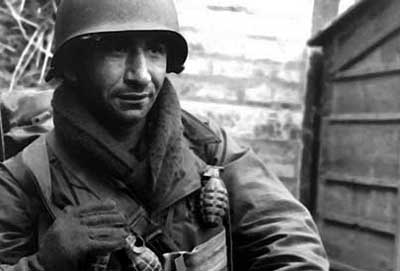
Why Wear A Scarf?
Function - Simply put, scarves do an excellent job of protecting a man's neck. A thick wool scarf can keep your neck warm on a cold Wisconsin morning, or a lightweight linen scarf can protect your neck from the sun and sand when crossing the Sahara.

Flair - Scarves can add a strong element of style, especially when they introduce color to an otherwise bland outfit. As long as it doesn't compromise functionality, few will question even a brightly colored piece of cashmere that brightens up a banker's charcoal overcoat and watch cap. However, in less functional roles (such as wearing a light-weight scarf indoors in lieu of a necktie) the man doing so needs to be very comfortable in his own personal style. It's also a good rule of thumb to keep the rest of the outfit simple so it isn't competing with the scarf for attention.

Scarf Build Type
There are a lot of terms out there – bandana scarves, head scarves, square scarves, circle scarves, skinny scarves, and so on. Let's keep it simple. You want your scarves to be rectangle and be made from a material that suits your needs.
Scarf Width & Length – Width should be from 6 to 14 inches, length from 50 to 90 inches, although an average height man wants a scarf at least 60 inches and a larger man should look for one in the 70 inch range.
Material – Scarves are typically made from either wool, cashmere, angora, cotton, linen, silk, synthetic materials, or a combination. Weave is very important as bulky scarves made from thick yarns require simple knots and are not as practical.
For winter scarves, stick with napped fabrics with a soft surface–you can't go wrong with wool or cashmere. If you're looking for a hot weather protective scarf–linen and lightweight cotton are great as are some synthetics designed specifically for this purpose.
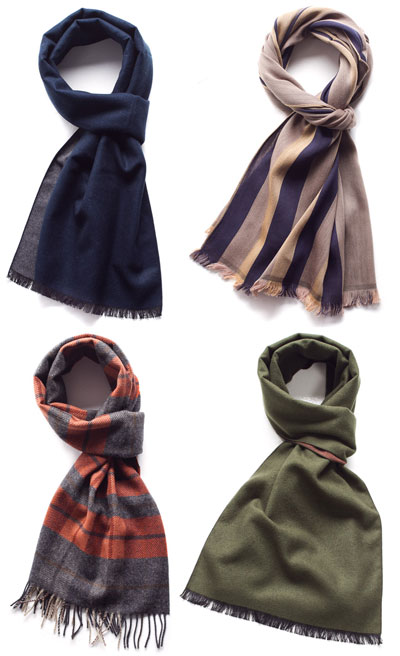
Thank you http://www.hommedelicacy.com for the images of four masculine scarves.
Determining What Sex The Scarf Is Designed For
Most scarves aren't made for men–we are a very small part of the market and as such you may find a scarf in the menswear sale rack that is questionable. And unless you're Steven Tyler, you should stay away from feminine-looking scarves. Here is how to spot a scarf designed for your wife:
- Any scarf in an animal print, bright pink, juicy magenta, electric blue, salsa picante, fresh tulip…..I think you get the point.
- Anything that comes with a pin or is advertised to be worn with a scarf pin. Men do not wear scarf pins.
- Airy, see-through, super-lightweight scarves that could not possibly provide any function (ok, maybe they could act as a tourniquet) and are 100% fashion pieces.
- Large knitted scarves or scarves that could double as a blanket.
- Excessive fringes — some tassels in the same color as the scarf is fine, but steer clear of multi-colored pom-pom tips.
- Elaborately beaded scarves, scarves with sequins, shiny metal trinkets, or scarves with embroidered images of birds, flowers, etc.
How to Tie a Scarf
General Rules
- Keep it simple – only tie knots you are comfortable wearing–confidence is everything.
- Scarf length & thickness can limit knot style options.
- A scarf isn't a necktie–keep it loose.
- Function first–fashion second. Unless you're a rock star or The Style Blogger. Dan knows how to rock a scarf!
7 Ways to Tie a Scarf
In the video below, I cover seven ways to tie a scarf. And in addition to the basic directions in this section, most of the "knots" also have indvidual how-to videos if you want to jump to the directions for a particular one.
The Drape, or The Simplest Way To Wear A Scarf
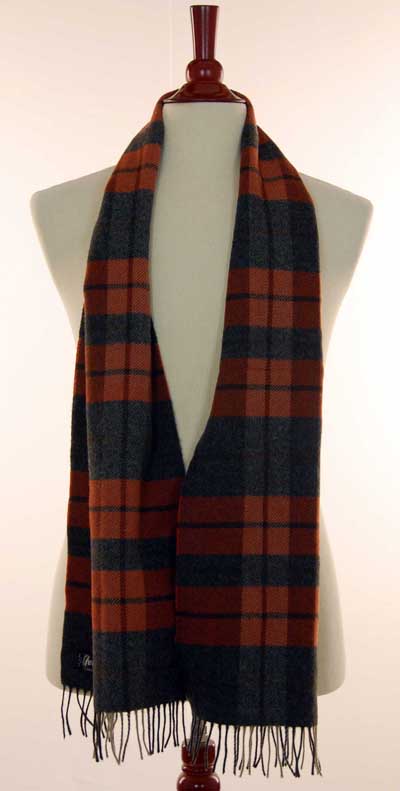
Simply drape the scarf over the neck and the front of your chest under your overcoat. No actual tying happens in this one, so it's a loose way of wearing a scarf meant more for ornamentation than actual warmth. It works well if you're wearing a suit or sports jacket with a deep V-shaped front. This is the classic lawyer or businessman's way of adding a scarf to a suit and tie ensemble.
Overhand Knot (or Ascot)
One of the simplest scarf knots you can learn and wear. The only complication is you have to determine how low or high to wear it. Normally it hangs a bit looser around the neck than other knots/wraps, so this style is more show than function.

How to tie it: Take the scarf and lay it over your shoulders. Take both ends of the scarf, and tie them "over-and-under," as if you were starting to do up a giant pair of shoelaces. Adjust the front to be a bit smooth and tighten closer to the neck as desired.
The Fake Knot
The fake knot looks more elaborate than it is. As it's name indicates, it uses a bit of deception to achieve the desired look. This knot shows up best with a patterned scarf or a scarf with a thicker weave. You can use a medium length scarf here without a problem.

How to tie it: Hang the scarf around your neck with one end being twice as long as the other. Tie a loose over-hand knot near the end of the shorter side, leaving about 12-18 inches on the end. Tug the knot apart slightly and slip the other end straight through and tighten to the desired length.
The Once Round
A simple tie that is actually one of my favorites. It does a great job keeping my neck warm and can be used with medium length to long scarves.
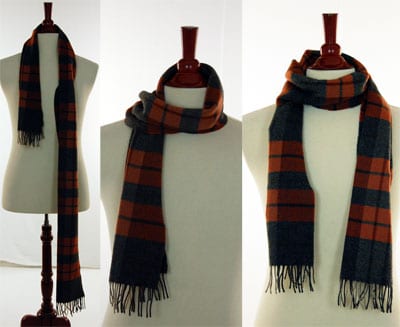
How to tie it: Take the scarf and wrap it once around your neck, leaving two ends dangling in the front.
The Twice Round
A cold-weather variant of the once round, the twice around scarf tying technique is a great choice for when you have a really long and thin scarf and the weather calls for the warmest wrap you can muster. I prefer my scarves to be at least 72 inches long for this one.
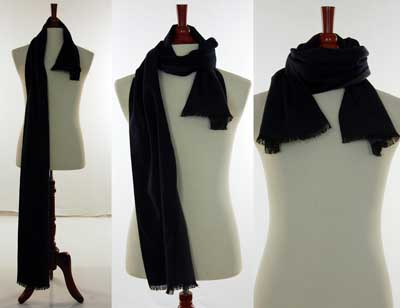
How to tie it: Wrap your long scarf twice around your neck, leaving two short ends hanging in the front.
The "Parisian" or French or European Knot
Also called "slip" or just "simple" style. This is fast and easy to tie and creates a large, warm knot right at the collar of a coat or jacket, making it a good wind-stopper. It requires a longer scarf unless you're using a thinner fabric such as silk. Bulky scarves do not work well as the end knot can appear too large.
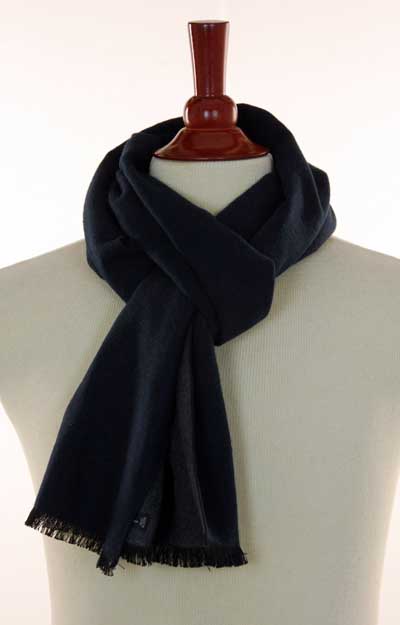
www.far1983.com
https://groups.google.com/d/msg/hyd-masti/GO9LYiFoudM/TKqvCCq2EbMJ
No comments:
Post a Comment